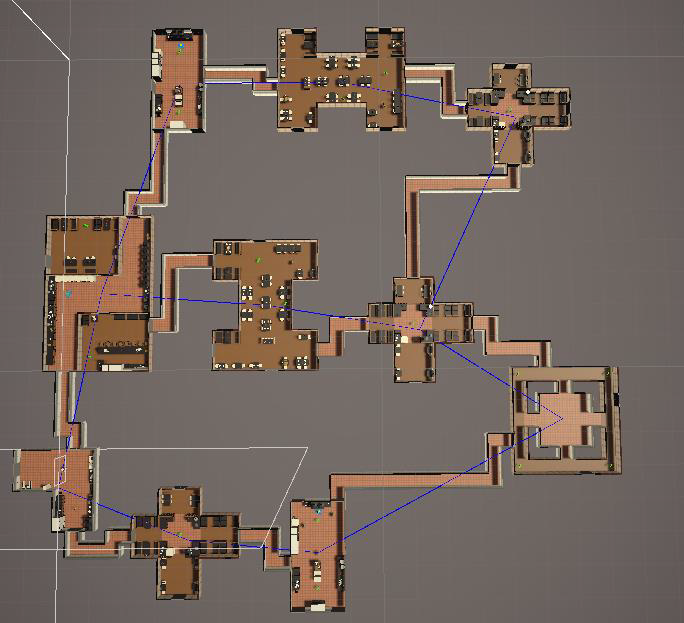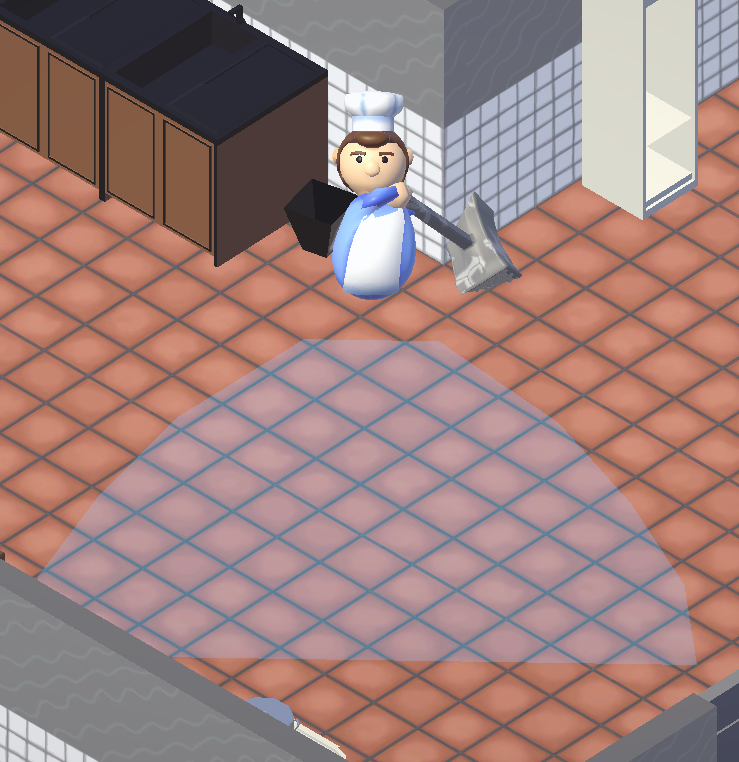Kitchen Nightmare
Kitchen Nightmare is a 2.5D kitchen themed dungeon crawler about a chef who has lost his mind and developed an unhealthy relationship with his ingredients.
The project was completed as part of my 3rd year 'Collaborative Games Development' module at the University of Chester. The team for this project consisted of team of 7 members with a composition of 4 Programmers, 2 Artists and UI Designer with myself contributing as the Team Lead, Programmer and Level Designer
Key Features
Procedural Level Generation

To procedurally generate random rooms and connect them with pathways, three key algorithms were used: Delaunay Triangulation, the Minimum Spanning Tree (MST), and the A* search algorithm.
Rooms were placed in an enclosed space and triangulated by x-coordinates, with non-Delaunay triangles adjusted via edge flipping for improved visuals. Connections between rooms were formed using the MST, but additional pathways were added to introduce loops and enhance gameplay fluidity. The A* search algorithm then connected rooms with pathway assets, using Manhattan Distance as a heuristic to create straight, precise hallways for player navigation.
Class / Inheritance Based Weapons and Combat System
I worked with another programmer to develop the attack system framework and several unique weapons. This system followed a top-down approach, with a base weapon class from which specific types—Basic, Line, AOE, and Custom Collider—were derived.
For instance, the mortar and pestle inherits core behaviors like damage, collision detection, and radius size from the Base Weapon and AOE classes. Its unique ability to pull in and push out enemies is implemented within its own derived class. To handle context-sensitive damage timings, we implemented a "DealDamage" function in the base class, triggered via animation events. This ensured consistent damage handling across all weapons, regardless of their effects.

Learning Points
Initially, I found the top-down programming approach challenging for conceptualizing and prototyping. However, I realized it is highly effective when all requirements are well-defined prior to development, providing a structured framework for implementation. This approach enabled our attack system to become a well-designed and extensible feature that accommodated all current and future potential weapons and attack types
Additionally, when working in a collaborative environment, it is crucial to maintain regular updates on feature implementation. While adhering to a pre-established plan is essential, individual programming styles and approaches can lead to integration challenges over time if not properly aligned.